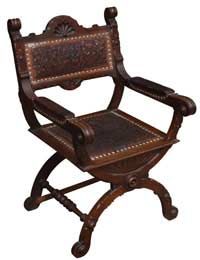Inheritance on Antiques and Artworks

Those with valuable antiques and artworks may wish to avoid having them sold off to fund government projects that they may not necessarily agree with (through taxation) or may wish purely to utilise them in order to reduce the overall Inheritance Tax Liability of their Estate. In doing this they may be able to insure that the artworks that they own end up in the public eye, rather than being sold off into private Estates, or being bequeathed to persons not fully appreciative of them.
If provisions are not made valuable antiques and artworks will be merely be treated as part of the rest of the Estate and valued accordingly. Often they will significantly increase the value of your overall assets, contributing to a significantly higher tax bill.
Inheritance Tax Loopholes
The main way to gain Inheritance Tax relief currently is in your own lifetime, under the Acceptance in Lieu scheme, whereby donations of artworks and antiques which are considered to be of a high quality and in the public interest may be put forward for consideration as donations to major national galleries throughout the U.K. Following this the pieces that you have submitted for consideration will be valued and allocated to the most appropriate gallery.
The A.I.L. scheme is thought to be of great importance as it avoids artworks being sold overseas in order to find the funds to pay Inheritance Tax bills. In short it ensures best value for the public, for the owner of the artwork, and in the long run for the benefactor of the deceased’s Estate. At the time of writing the A.I.L scheme is the biggest source of artworks acquired by major collections in the U.K. This testifies both to peoples generosity and to their willingness to reduce their Inheritance Tax Bill!
If you do not wish to do this you may wish to give antiques and artworks to friends or family under the Seven Year Rule meaning that you will not have to pay tax on those artworks, providing that you live another Seven years after making your gift. If you die within Seven years you will be liable for tax on the gift(s) depending how many years ago you made the gift.
A person also may bequeath a large monetary donation to a gallery or museum on their passing and offset this against Inheritance Tax, providing the gallery is a major national gallery.
Valuations of Artworks and Antiques
Artworks and antiques must be valued along with the rest of the Estate by the Personal Representative of the deceased. It is imperative that an accurate valuation is made, and any valuation significantly lower than the true value of an item may be subject to some kind of penalty. The best thing to do in this case is to rely on the advice of experts – certainly if the piece in question, and overall Estate, are of significant value.
You may wish simply to leave artworks to specific persons you know – in this case be sure to stipulate exactly who you wish them to be left to in your will. Otherwise the Estate will pass naturally to those legally entitles to it in the absence of any clear instructions (see related articles for further information.


Re: Will Inheritance Affect My Council Tenancy?
Im facing similar situation. Inheritence only enough to buy foreign property, agricultural holding, or derelict…
Re: Inheriting Property
Am I allow to get housing benefit on my mums property till its sold?even though I will eventually be entitled to 25%of the sale
Re: Inheriting Property
Am I allow to get housing benefit on my mums property till its sold?even though I will eventually be entitled to 25%of the sae
Re: Will Inheritance Affect My Council Tenancy?
I am living in temporary council accommodation and due to illness am receiving PIP plus Universal Credit. I am…
Re: Will Inheritance Affect My Council Tenancy?
I’m a council tenant my died and left a flat over 55 to live in that buliding to me how’s do I go ambition…
Re: Will Inheritance Affect My Council Tenancy?
I doubt this will be answered as I can’t see any answers to anyone else’s comments but here goes My mum wants…
Re: Will Inheritance Affect My Council Tenancy?
I have inherited property from my mother in law, as we live in council property could we rent the inherited…
Re: Will Inheritance Affect My Council Tenancy?
Assured social housing tenant (SH), lone parent recently deceased leaving an estate including a 3 bedroom…
Re: Will Inheritance Affect My Council Tenancy?
My disabled son lives in a council flat and receives benefits, including PIP. How could I arrange for him to…
Re: Will Inheritance Affect My Council Tenancy?
me and my brother are set to inherit 2 propertys but we have council flats. will we loose our rights to council…